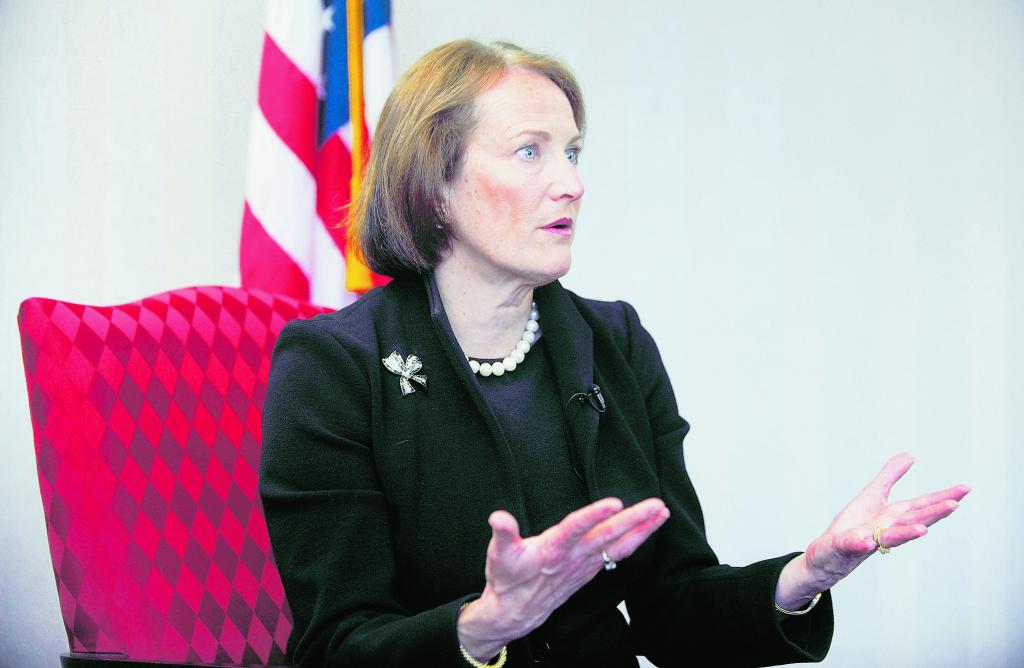WASHINGTON — Capital is the oxygen that a small business needs to survive and thrive. But across the country, the air’s pretty thin, as business owners from coast to coast complain of huge hurdles to getting badly needed loans.
Jim Collins, co-owner with his wife, Arlene, of Quantum Energy Solutions, has been in business in Sacramento, Calif., since 1974. He has a $50,000 line of credit, backed by the U.S. Small Business Administration, through US Bank, owned by US Bancorp. He has a solid credit history and $30,000 in untapped credit.
Yet when Collins approached the bank about borrowing at least $500,000 to expand his 12-employee firm – which retrofits buildings with energy efficient technologies – he was rebuffed, told that his company lacks resources and collateral. US Bancorp declined comment.
Collins, 70, can’t get the money he needs to hire five additional workers and ramp up marketing, even as the Obama administration promotes the “green jobs” of the future.
“The credit crunch is still there. It really impedes our ability to grow,” he said. “I’d put five more people to work tomorrow.”
Lending across the U.S. economy contracted 7.4 percent last year, the biggest such drop since 1942, according to the Federal Deposit Insurance Corp. That means $1.5 trillion in lending evaporated last year, the Treasury Department estimates.
Corporations are issuing bonds again, and large companies have access to bank loans, but it’s still an uphill climb for the little guy.
“There’s a big gap in access to credit for small firms now, and it’s a huge problem,” Karen Mills, the head of the Small Business Administration, told McClatchy Newspapers. “We have a sense that the banks are not back to lending the way that they need to be, going forward.”
Small businesses account for 65 percent of U.S. employment, so it’s a serious matter that the credit is crunch squeezing these firms.
“If we’re going to come out of this recession and get people back working, it’s going to because we give small businesses the support that they need,” said Mills, whose agency has guaranteed more than $22 billion in loans to small firms since early last year.
Blame for the crunch doesn’t fall on banks alone. Large banks had $4.4 trillion in unused credit lines outstanding in 2009, as consumers and businesses shunned borrowing to pay down debt. A 32 percent increase in U.S. bankruptcy filings last year suggests that plenty of borrowers simply aren’t creditworthy. FDIC data show through December that lenders in three major banking cities – Chicago, Kansas City and San Francisco – had more than 5 percent of outstanding loans late 90 days or longer.
“Lenders aren’t saying we don’t want to lend. Lenders are saying we’d like to lend, but loan requests are down, and also the bank regulatory agencies are scrutinizing loans at a much higher level than they have been in the past,” said James Ballentine, the senior vice president of government relations for the American Bankers Association. “That, too, is understandable, because you want to make sure that all guidelines are being followed and the collateral is there, and that’s a problem for many businesses as well.”
Still, it’s clear that small companies face huge hurdles when approaching banks for loans or even trying to tap existing lines of credit.
“The anecdotal evidence certainly suggests there’s a credit crunch for small business. You can’t prove it, but it’s pretty hard to come down on the other side,” said Douglas Elliott, a researcher at The Brookings Institution, a center-left policy research center in Washington.
North Carolina’s Bob Kingery, co-founder of Southern Energy Management in Morrisville, near Raleigh, tells a story similar to that of Collins of Sacramento. His firm installs solar photovoltaic panels for businesses throughout the Southeast. In the past two years, about 15 projects have been scratched or delayed indefinitely as customers scramble for financing options.
The tight credit market has tied up about $30 million in business, Kingery calculates. Why? Banks categorize solar installations as construction outlays, he said, and “banks have a bunch of bad construction projects on their books.”
Send questions/comments to the editors.



Success. Please wait for the page to reload. If the page does not reload within 5 seconds, please refresh the page.
Enter your email and password to access comments.
Hi, to comment on stories you must . This profile is in addition to your subscription and website login.
Already have a commenting profile? .
Invalid username/password.
Please check your email to confirm and complete your registration.
Only subscribers are eligible to post comments. Please subscribe or login first for digital access. Here’s why.
Use the form below to reset your password. When you've submitted your account email, we will send an email with a reset code.